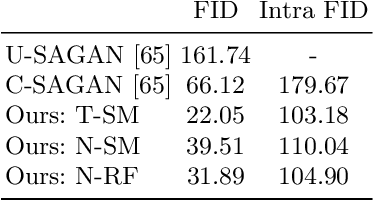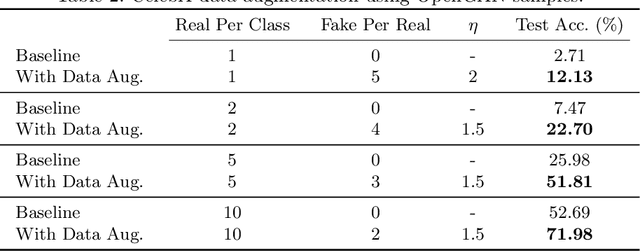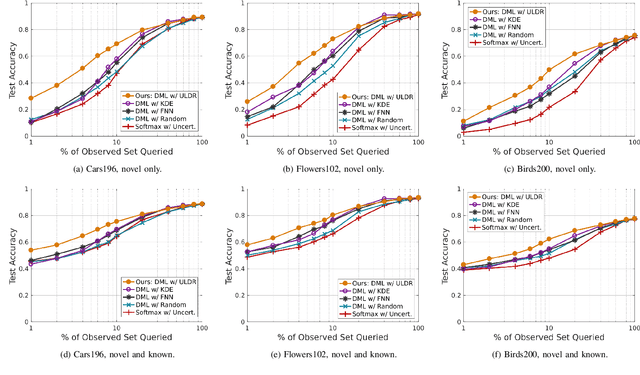Benjamin J. Meyer
Multimorbidity Content-Based Medical Image Retrieval Using Proxies
Nov 22, 2022



Abstract:Content-based medical image retrieval is an important diagnostic tool that improves the explainability of computer-aided diagnosis systems and provides decision making support to healthcare professionals. Medical imaging data, such as radiology images, are often multimorbidity; a single sample may have more than one pathology present. As such, image retrieval systems for the medical domain must be designed for the multi-label scenario. In this paper, we propose a novel multi-label metric learning method that can be used for both classification and content-based image retrieval. In this way, our model is able to support diagnosis by predicting the presence of diseases and provide evidence for these predictions by returning samples with similar pathological content to the user. In practice, the retrieved images may also be accompanied by pathology reports, further assisting in the diagnostic process. Our method leverages proxy feature vectors, enabling the efficient learning of a robust feature space in which the distance between feature vectors can be used as a measure of the similarity of those samples. Unlike existing proxy-based methods, training samples are able to assign to multiple proxies that span multiple class labels. This multi-label proxy assignment results in a feature space that encodes the complex relationships between diseases present in medical imaging data. Our method outperforms state-of-the-art image retrieval systems and a set of baseline approaches. We demonstrate the efficacy of our approach to both classification and content-based image retrieval on two multimorbidity radiology datasets.
OpenGAN: Open Set Generative Adversarial Networks
Mar 18, 2020



Abstract:Many existing conditional Generative Adversarial Networks (cGANs) are limited to conditioning on pre-defined and fixed class-level semantic labels or attributes. We propose an open set GAN architecture (OpenGAN) that is conditioned per-input sample with a feature embedding drawn from a metric space. Using a state-of-the-art metric learning model that encodes both class-level and fine-grained semantic information, we are able to generate samples that are semantically similar to a given source image. The semantic information extracted by the metric learning model transfers to out-of-distribution novel classes, allowing the generative model to produce samples that are outside of the training distribution. We show that our proposed method is able to generate 256$\times$256 resolution images from novel classes that are of similar visual quality to those from the training classes. In lieu of a source image, we demonstrate that random sampling of the metric space also results in high-quality samples. We show that interpolation in the feature space and latent space results in semantically and visually plausible transformations in the image space. Finally, the usefulness of the generated samples to the downstream task of data augmentation is demonstrated. We show that classifier performance can be significantly improved by augmenting the training data with OpenGAN samples on classes that are outside of the GAN training distribution.
The Importance of Metric Learning for Robotic Vision: Open Set Recognition and Active Learning
Feb 27, 2019



Abstract:State-of-the-art deep neural network recognition systems are designed for a static and closed world. It is usually assumed that the distribution at test time will be the same as the distribution during training. As a result, classifiers are forced to categorise observations into one out of a set of predefined semantic classes. Robotic problems are dynamic and open world; a robot will likely observe objects that are from outside of the training set distribution. Classifier outputs in robotic applications can lead to real-world robotic action and as such, a practical recognition system should not silently fail by confidently misclassifying novel observations. We show how a deep metric learning classification system can be applied to such open set recognition problems, allowing the classifier to label novel observations as unknown. Further to detecting novel examples, we propose an open set active learning approach that allows a robot to efficiently query a user about unknown observations. Our approach enables a robot to improve its understanding of the true distribution of data in the environment, from a small number of label queries. Experimental results show that our approach significantly outperforms comparable methods in both the open set recognition and active learning problems.
Deep Metric Learning and Image Classification with Nearest Neighbour Gaussian Kernels
Jul 02, 2018



Abstract:We present a Gaussian kernel loss function and training algorithm for convolutional neural networks that can be directly applied to both distance metric learning and image classification problems. Our method treats all training features from a deep neural network as Gaussian kernel centres and computes loss by summing the influence of a feature's nearby centres in the feature embedding space. Our approach is made scalable by treating it as an approximate nearest neighbour search problem. We show how to make end-to-end learning feasible, resulting in a well formed embedding space, in which semantically related instances are likely to be located near one another, regardless of whether or not the network was trained on those classes. Our approach outperforms state-of-the-art deep metric learning approaches on embedding learning challenges, as well as conventional softmax classification on several datasets.
 Add to Chrome
Add to Chrome Add to Firefox
Add to Firefox Add to Edge
Add to Edge